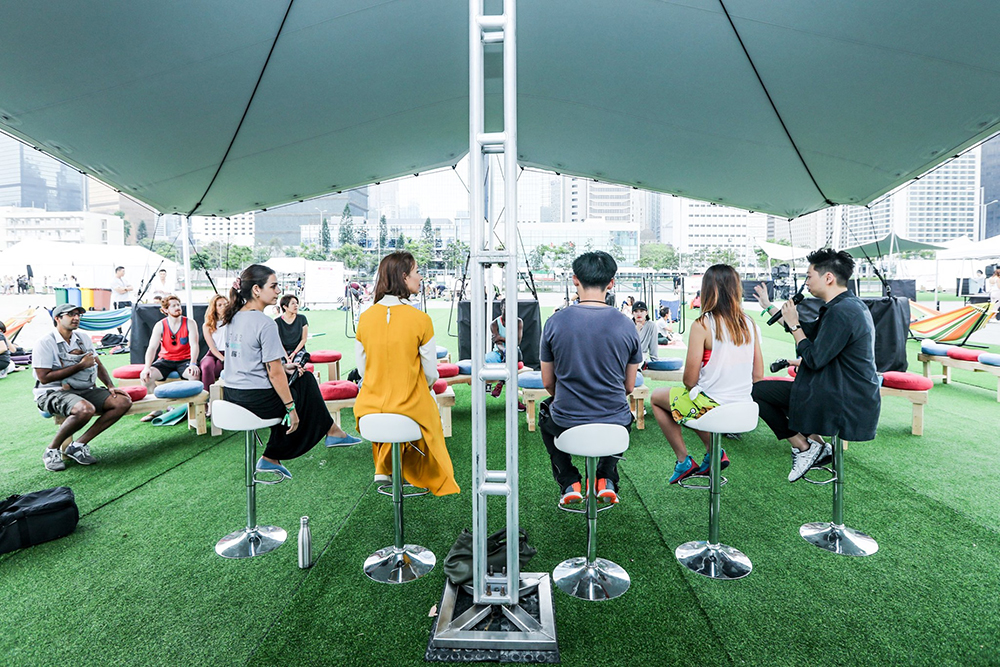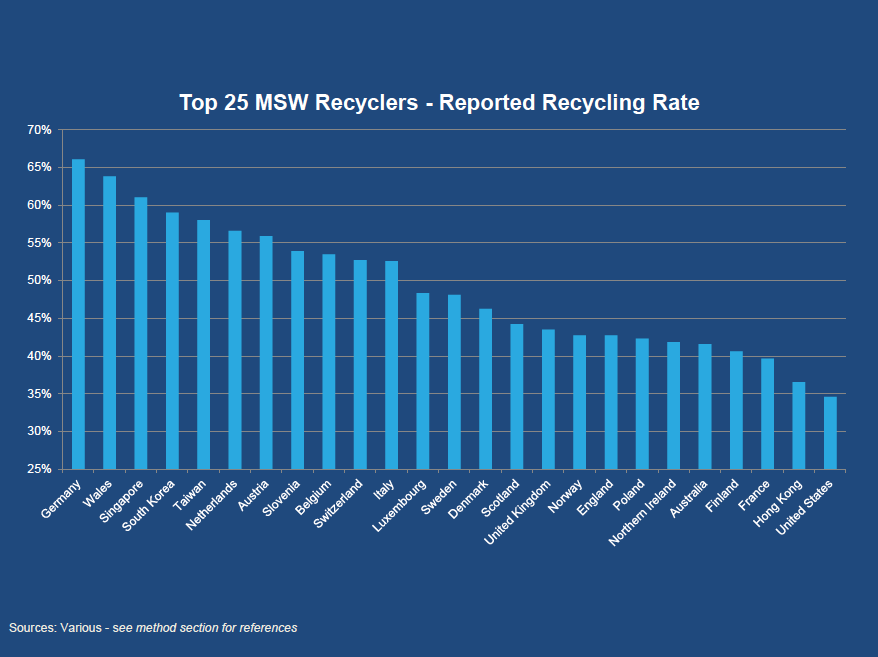Waste and what to do with it is a complex issue. But there’s also a tremendous amount of opportunity for businesses and individuals to make a positive impact. And we’re not just talking recycling. So we jumped on the chance to bring together some of Hong Kong’s biggest social movers and shakers to shed light on the problems and solutions surrounding waste (listen up, entrepreneurs).
Unless you live off-grid, you’ve probably heard the staggering statistics surrounding the state of our planet today. Our oceans are filled with plastic; to the extent that there will be more plastic than fish by weight by 2050. And every day in Hong Kong there are 370 tonnes of waste thrown into the landfill, and that’s not even taking electronic waste into consideration (which works double time on damaging our soil with chemicals). Or maybe you’ve noticed the hordes of cardboard collected not just in the streets of Hong Kong but also in most of the major cities in Asia? And we’re barely scraping the tip of the iceberg here. The list goes on.
But, there’s always a bright side. Imagine if waste from one organisation or industry could be used to supply the raw materials for another one? Well, it can. And this process goes by a fancy term we like to call the “circular economy”. It defines a community where everything produced gets either reused, recycled or upcycled. It’s a paradigm away from our current linear model, which relies on the “take-make-dispose” model of production.
This year, IRIS – a health and wellness festival in Hong Kong – offered us an opportunity to put together a panel on sustainability and we jumped on the chance to get down to the nitty-gritty when it comes to Hong Kong’s waste situation. We invited experts in the field, including thought leaders from local grassroots communities like the Circular Community of Hong Kong, HK Recycles and No More Junk. In earlier discussions, we all agreed that no one in Hong Kong was sure if waste is really being recycled. Even though trash is getting separated at home, no one knows what happens next. This scepticism probably comes from witnessing recyclables being mixed up again after collection.
So we decided to investigate and find out the truth behind the waste situation in Hong Kong. We drew up our questions and took them to our panel of experts, including:
- Tom Ng, member of 正澳社區回收 街坊 NO MORE JUNK Bay Gāai-fōng
- Aigul Safiullina, founder of Sustainable Minds and former co-founder of Zero Waste Life
- Tanja Wessels, founding partner of the Circular Community HK
- Philippe Li, business developer at HK recycles

The Situation
QUESTION: When we talk about waste, what do we mean and what are we dealing with?
Municipal Solid Waste (MSW) is comprised of solid waste from households, commercial and industrial sources. MSW is disposed of at landfills. In 2017, that figure stood at nearly 6 million tonnes.
Food waste is comprised of waste produced during food production, processing, wholesale, retail, and preparation, as well as after meal leftovers and expired foods. It makes up roughly 36% of MSW.
Construction waste includes waste arising from construction work such as construction, renovation, demolition, land excavation, and road work. Through waste sorting and separation, inert material is used as fill in reclamation sites, when available. The non-inert portion of the waste still goes to landfills.
Chemical waste is comprised of substances specified as posing a possible risk to health and/or the environment.
Clinical waste is generated from various healthcare, laboratory and research practices that should be appropriately managed to minimise danger to public health or risk of pollution.
Waste Cooking Oils (WCO) include oils abandoned from any cooking process for human consumption, other than those from households. It should be appropriately handled to promote the recycling of local resources and prevent them from re-entering the food chain.
QUESTION: What can be recycled?
Paper waste: newspapers, books, magazines, office papers, cardboard, plastic tape (but remember to remove any plastic-coated paper waste).
Metals: clean iron or aluminium cans, milk powder cans, and cookware
Plastics: beverage plastic bottles, personal care products, and plastic bottles
Rubber
Electrical Appliances: cookers, toasters, ovens, hair-dryers, vacuum cleaners, electric fans, irons, mobile phones, telephones, cameras, recorders, MP3 players, electronic dictionaries, notebooks, computers, printers, DVD/cassette tape players… we could go on, you get the gist.
Rechargeable Batteries
Fluorescent Lamps
Clothes
Glass
Furniture
Food
Note that air conditioners, refrigerators, washing machines, televisions, etc. should go to the Waste Electrical and Electronic Equipment (WEEE) recycling program.
QUESTION: What cannot be recycled?
Thankfully, the list is relatively short. It includes beverage or milk cartons with plastic or aluminium interior coatings, aerosol cans, chemical containers, mops, light bulbs, correction fluid containers and medicine containers.
QUESTION: Why is Hong Kong’s recycling rate is so low compared to other Asian cities?
There are barriers preventing companies and individuals engaging with recycling, but primarily it comes down to money, knowledge, and misunderstanding.

Solutions from an individual point of view
QUESTION: Is it possible to live a zero-waste lifestyle in HK? How can people begin to go about it?
- Have a strategy applicable to your lifestyle and start small (#LittleGreenSteps are the way forward!)
- Evaluate how much waste you produce in a week. Only, after you start separating your waste and weighing it, will you see more clearly how much you’re creating.
- Figure out which of the items you are ready to refuse or at least replace with sustainable alternatives.
- Start small! During the first month, focus on composting food. Month two is to replace your kitchen supplies with more sustainable alternatives. And month three could be devoted to your bathroom.
- Start to get in the habit of refusing things: takeaway meals (or bring your containers when possible), goodie bags and low-quality products with short lifecycles, for example.
- Don’t buy alternatives right away as you can shop your home first and be creative with DIY products.
- Don’t be afraid to make mistakes and be kind to yourself – take it slow and enjoy your journey.
QUESTION: What can we, as consumers and companies do to use fashion as a force for good?
- Ask questions, get curious, signal to companies that people are savvier nowadays
- Celebrate brands and people with progressive values. This can be done financially and publicly on social media.
- If you want to go to the edge of things (and this is not for everyone), stop shopping and find joy in other ways.
SOLUTIONS FROM A COUNTRY POINT OF VIEW
QUESTION: Can you recommend us circular services to support in Hong Kong?
Vcycle: Founded in 2017, V Cycle tackles Hong Kong’s environmental issues on two levels; ecological and social. The 10 Tonne Challenge is a charity campaign focused on plastic bottle collection and poverty alleviation. Four cardboard grannies participated in the battle to sort plastic bottles by colour. The bottles will be recycled and upcycled into creative, multi-purpose bags. The sewing and stitching process will create job opportunities for rehabilitation participants. Proceeds from the sales of the bags will go towards improving the lives of many other cardboard grannies.
HK Composting Community: 3,600+ tonnes of food waste is sent to HK landfills every day. Rotting food produces methane, a greenhouse gas 20 times more potent than carbon dioxide. But thanks to HK Composting Community it gets turned into nutrient-rich compost.
The R Collective: The R Collective rescues and upcycles surplus luxury materials that are destined to be wasted and transforms them into beautiful, enduring affordable luxury designer pieces.
Tiostone Environmental: By mixing recycled glass with coal ash and other construction waste, Tiostone produces 100,000 to 150,000 square metres of eco-bricks in Hong Kong a year.
Kevin Cheung: An upcycling product designer experimenting with waste materials, reusing them to create new products and also collaborating with different NGOs to produce the products locally.
Boombottle: A speaker system made from a plastic waste container.
Rice Bell: A bicycle bell made out of wasted rice cooker bowl.s The aluminium dome shape creates a good resonance sound (who knew!)
QUESTION: What are the #LittleGreenSteps that panellists believe we can implement into our lives daily?
Tanja: Reduce, refuse, refuse (find other ways to experience joy, goddamit!)
Aigul: Strive for a simple life focusing on your well-being, social relationships, and experiences over-consumption. The healthier and happier we are, the healthier and happier is the planet.
Philippe: Be consistent and use reusable items frequently. Don’t keep buying reusable items as that defeats the purpose of lowering your ecological footprint.
Tom: BYO stuff! And don’t only say no to plastic, say no to all single-use. Plan your consumption to avoid impulsive shopping.


